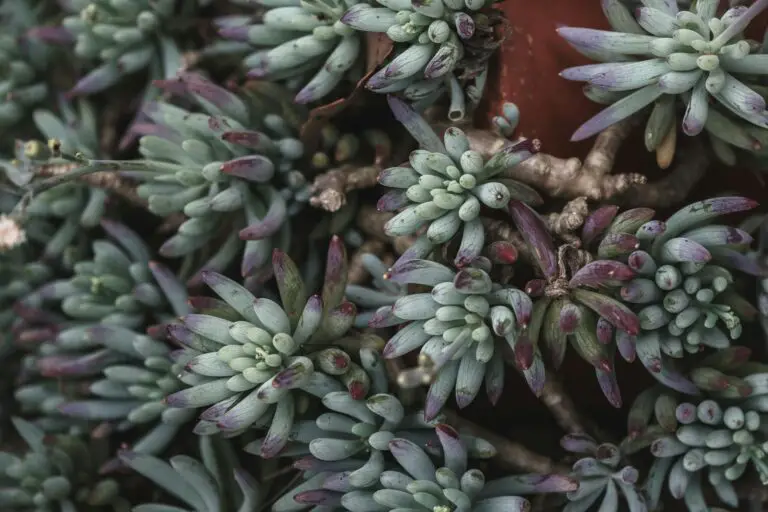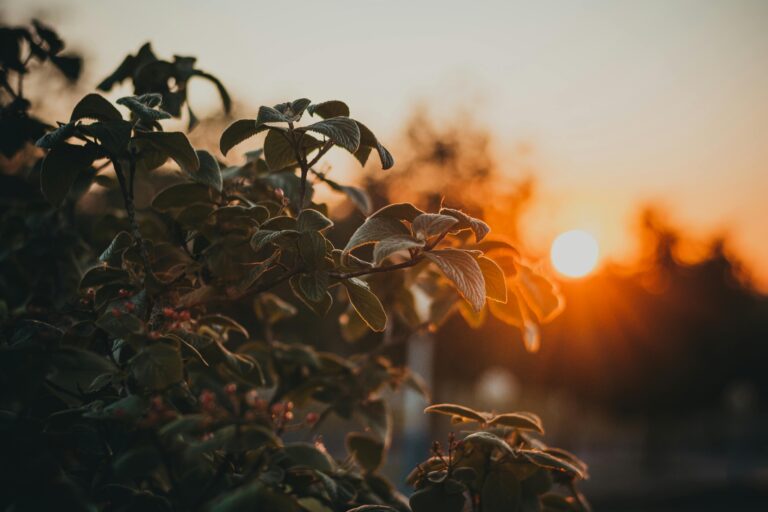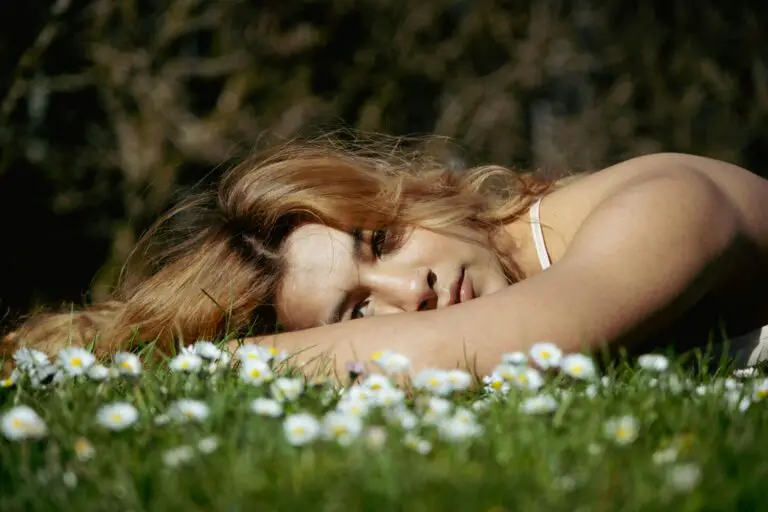Introduction to Sedum: Thriving in Sunlight
Step into the world of sedums, the robust and elegantly resilient treasures of the gardening realm. Known for their versatility and ability to withstand the scorching caress of the sun, these drought-tolerant gems are the darlings of gardeners and landscape aficionados alike. But the burning question flares: should sedum be planted in full sun? Let’s dig in to reveal the truth.
Imagine a sun-drenched rockery, where the fiery rays graze the earth, demanding only the fittest and most adaptable to prosper. Here, sedum, with its succulent foliage and riotous blooms, is not merely surviving; it’s celebrating life in total solar embrace. These sun-lovers bask in the full daylight, their vibrant colors intensifying with each beaming hour, as if they’re winking at the sky, immune to the fears of lesser plants.
In urban oasis and sprawling meadows alike, sedum emerges as a beacon of low-water landscaping, proudly flourishing beneath a relentless sun. You might catch a glimpse of their lush tapestry on green rooftops or spreading like wildfire in a suburban garden where tradition meets the avant-garde. Each sedum plant an artist’s stroke, painting resilience and beauty across canvasses of every shade.
Now, cast an eye upon this  . Notice how each plump leaf and sturdy stem is designed to thrive under full sun, a testament to sedum’s love for basking in sunlight. These are the botanical masterpieces that spark the endless conversations amongst green-thumbed enthusiasts and seasoned horticulturists, each seeking to perfect the art of sedum cultivation.
. Notice how each plump leaf and sturdy stem is designed to thrive under full sun, a testament to sedum’s love for basking in sunlight. These are the botanical masterpieces that spark the endless conversations amongst green-thumbed enthusiasts and seasoned horticulturists, each seeking to perfect the art of sedum cultivation.
While some plants might shrink back from the touch of the midday sun, sedum stands undaunted. It’s not just about survival; it’s about claiming their place in the sun. And perhaps, in witnessing their unwavering zest for light, we can learn a lesson or two about embracing the brilliance of our own paths, however brightly they may shine.
Unpacking the Sedum Sun Myth: How Much Sunlight Do They Truly Need?
Is the Sedum, that plucky little succulent, a true sun worshipper? The common narrative suggests sedums are sun-seekers, but it’s time to dig deeper and unearth the real story behind these resilient plants. Let’s take a curious peek into the world where sedums originate, shall we?

Nestled in rocky outcrops and flourishing in rugged terrain, sedums are no strangers to the abundant embrace of sunlight. Their fleshy leaves and stout stems, seemingly crafted by Mother Nature’s own hands, are tailor-made to withstand and indeed relish the generous touch of the sun’s rays. If you’ve ever seen these succulents in their natural habitat, you’ll quickly notice they are as much at home in the blazing glory of the sun as they are in the subtle warmth of the dappled light.
But here’s the twist – just as humans can love the sun yet still need to seek shade, sedums too must find balance. While these stellar succulents do enjoy a good bask, their foliage hints at a need for moderation. The rich pigments that paint their leaves in hues of ruby, emerald, and gold, speak not just of beauty but function as well. These are the sedums’ built-in sunscreen, protecting them from getting too toasted under the sky’s fiery furnace.
For those with a green thumb, translating these insights from mother nature can be as gratifying as sipping lemonade in the summertime. When you bring sedums into your garden, mimic their natural conditions and give them a sunny spot. Yet, don’t forget to observe and offer reprieve on those scorching afternoons. A little shade could be the secret to their vivid vibrancy. In fact, for more insightful gardening tips, exploring the art and science of plant care can go a long way.
Real-life examples abound, like Tom’s terrace garden in Tucson, where a collection of sedum spectabile stands tall, bathed in sunlight yet retreating beneath a pergola when the desert sun peaks. Or consider Nancy’s backyard in Nantucket, where her sedum ‘Autumn Joy’ adds bursts of color to her garden, basking in the full sun but is partially shielded by taller perennials as the day wanes.
In essence, understanding the sedum’s sun requirements is a dance – a balance of exposure and protection, akin to applying sunscreen on a bright summer’s day. Sedums may seem to be sun addicts at a glance, but what they truly crave is a nuanced symbiosis with the light. They thrive in full sun, but, like us, they too appreciate a moment in the shade to catch their breath.
Sedum Species Spotlight: A Diversity of Sunlight Needs
Let’s shine some light on the array of sedum species that grace our gardens. These succulent beauties are more than just drought-resilient troopers; they are a tapestry woven with varying shades of sunlight needs. Not all sedum are sun-worshippers, and understanding the spectrum can be your secret to selecting the perfect variety that will thrive in your backyard haven.
Take, for example, the classic Sedum telephium, often spotted basking in the full glow of the midday sun. Then, there’s the charming Sedum spurium, flexible enough to flourish in partial shade while still soaking up the sun’s kiss in the afternoon. It’s the ultimate juxtaposition—a real-life lesson in adaptability and resilience! The point here? No one-size-fits-all rule applies when it comes to these ground-covering gems.
Imagine for a moment, a sedum selection that’s tailor-made for your unique garden. Picture vibrant Sedums thriving amidst the light conditions they love. Whether it’s a sunny slope or a shadow-kissed nook, every corner can be a sedum sanctuary.
For those itching to get hands-on, let’s roll up our sleeves and dive deep into the practical tips from experienced gardeners. There’s a wealth of knowledge ready to be unearthed, from choosing the right species to the specifics of care. The knowledge you gain will be a game-changer, and the sheer variety of sedum will leave you spellbound. Don’t miss out on helpful insights, like those found in this video, where gardening enthusiasts share invaluable advice on sedum care and propagation:
As you embark on your sedum journey, remember, these rugged beauties are not just about surviving; they’re all about thriving. With the right knowledge, you’ll have a garden that’s not just alive but truly lively. An exuberant patchwork of sedum species, bursting with hues and textures, is within reach. Learn more about nurturing these distinctive plants in various environments by visiting a dedicated resource like Gardener’s Path.
Identifying the Best Sedum for Your Garden’s Light Conditions
Picking the right sedum is akin to matchmaking—pairing the perfect plant with its ideal spot under the sun (or in the shade). It’s an art and a science, blending the visual allure with botanical know-how. Some sedum loves the limelight, while others prefer a sliver of shade to show off their best colors and shapes.
For those seeking expert guidance, delve into the wealth of information offered on specialized websites, like Gardener’s Path, where the nuances of sedum care unfold. Here, you can find the golden tips for your green ventures, ensuring your sedums not only survive but also radiate beauty in the best lighting conditions they deserve.
It’s this dance with sunlight that sparks the magic in our gardens. By selecting the right sedum, we can create an outdoor stage where every species has its moment in the spotlight—forging a performance that mesmerizes with its simplicity and charm.
Gardening Success with Sedum: Sunlight Best Practices
If you’ve ever wondered, “should sedum be planted in full sun,” then you’re not alone! The topic is quite the buzz in gardening circles—and for good reason. Sedum, a genus of over 400 species, thrives remarkably well when it receives the right amount of solar applause. Let’s unravel this sunny conundrum together, shall we?
Picture this: a sedum garden, basking under the midday sun like a beach-goer soaking up the rays. It’s no mere coincidence that these hardy succulents are often found sparkling with vitality in rock gardens, containers, and borders. Sunlight isn’t just a nice-to-have for sedum; it’s their lifeline—the difference between a plant that’s surviving and one that’s thriving.

Here’s a real-life nugget for you: sedum prefers a spot that gets about 6 hours of sunlight a day. However, “full sun” doesn’t always mean the same thing depending on your locale. In cooler climates, a day-long bath in sunlight is just what the green doctor ordered. But if you’re gardening in hotter zones, a little afternoon shade won’t hurt—think of it as sunscreen for your sedum.
Seasonal changes also play their part. With the changing angle of the sun through the seasons, what was once a sun-drenched garden may temporarily fall under shade. It’s a dance of light and shadow, and your sedum needs to be well-positioned to enjoy its spotlight year-round.
Now, if you’re new to the gardening game, here’s a pro tip: When transitioning your sedum to a sunnier spot, do it gradually. A sudden move from shade to full sun might just give your sedum a bit of a sunburn. Incremental exposure to increased light allows your sedums to acclimatize, ensuring they don’t wither under the pressure of their newfound sunny fame.
And let’s end on some actionable advice: observe your sedum. Are their colors vibrant and leaves perky? That’s the sign of a sun-loving sedum living its best life. Lanky growth or washed-out leaves? Your green friend might be begging for more light. Use these visual cues to adjust the amount of sunlight your sedum is receiving, steering them towards a picture-perfect existence under the sun. Remember, the key to sedum success is a delicate balance—a symphony of light and life.
Avoiding Common Pitfalls: When Full Sun Is Too Much
Picture this: It’s a gloriously sunny day and your sedum—as plucky and rugged as they are—bask under a canopy of blue. While these succulent stars typically revel in the spotlight of full sun, it’s a balancing act. Too much sun can turn from a sweet serenade into a scorching solo, putting your plants at risk of the botanical equivalent of a nasty sunburn and thirst beyond quenching.
Imagine you’re lounging on the beach without sunscreen; that’s your sedum without relief from an unrelenting sun. Some varieties might tan and toughen up, but others could crisp faster than bacon in a sizzling pan. Recognize the signs: Leaves may bleach, looking more washed out than your favorite pair of jeans, or they could wither as if pleading for a drop of water.

Don’t worry, though; I’m not suggesting you build a beach umbrella for each plant. It’s about strategic planning. Planting sedum where they can soak up morning rays but catch afternoon shade, is like choosing a table at a café with just the right amount of sunlight—comfortable and bright, but never blinding.
Take it from someone who’s seen a sedum or two topple due to sun-stroke: it’s the simple steps that safeguard them. A little mulch can act like a sunhat for the soil, keeping roots cool and moist. And if heat waves hit like desert mirages, a light cloth over your plants can be as protective as a cloud drifting in front of the sun.
In essence, knowing your sedum’s sun threshold is like knowing your friend’s spice tolerance. Not all can handle the heat, even those that claim to love it. So, keep an eagle eye on your green buddies during those peak sunny hours, and ensure they live to bask another day.
Integrating Sedum in Your Landscape: Companion Plants and Design Ideas
Embracing the full sun, sedum plants are like the sunbathers of the garden world, soaking up those golden rays with glee. But what about their fellow companions in the landscape? Let’s uncover the plants that not only keep sedum company but also elevate it to the centerpiece of an eye-catching, sun-drenched garden tableau.
Stellar Companions for Your Sun-Loving Sedum
Picture this: you pair your robust, drought-tolerant sedum with the feather-like lavender, their purple spikes dancing in the breeze and providing a splash of color, along with a soothing scent. Now, add a few clumps of ornamental grasses that sway rhythmically, juxtaposing the sedum’s stout form with flowing textures and movement. Think Pennisetum or Festuca, whose silvery-blue tones can complement the sedum’s varied hues.
Don’t stop there! Imagine bulbs of allium popping up among the sedum, with their globe-like purple blossoms creating a visual spectacle that screams ‘Look at me!’ But what’s most exciting is how these companions aren’t just eye candy—they’re sturdy, low-maintenance plants that love the limelight just as much as sedum does. They thrive in the same conditions, making your gardening adventure a breeze.
Sculpting a Sun-Kissed Garden Showcase
Now, let’s paint with your green thumb and design a garden that highlights these radiant sedums. Envision a rockery where sedums cascade over stone edges, providing a textured, layered look that plays with height and depth. Or, how about a sedum ‘river’ flowing through your garden, its vibrant foliage carving a path amongst gravel beds that emulate the natural flow of water. It’s not just about planting; it’s about creating a living landscape painting.
Take your sedum story to the next level by integrating a full sun perennial border. Adding splashes of Echinacea and daylilies around your sedum can offer not only an artful array of forms and colors but also attract bees and butterflies. It’s a scene brimming with life where every plant, including your beloved sedum, plays a starring role in this sunlit performance.
Ensure your sedum-rich garden is seen not just during daylight but as dusk falls. Incorporating low-voltage landscape lighting can artfully illuminate the unique textures and shapes of your sedum and its companions. It’s not only practical, allowing you to enjoy your garden by night, but also adds a touch of magic as shadows and light play among the leaves and blooms.
For a dash of real-world inspiration, take a look at this video showcasing how to create a full-sun garden that would make a perfect setting for sedum and its sun-loving friends.
Whether you’re a seasoned gardener or just starting out, incorporating sedum into a full sun landscape is a delightful endeavor. With the right companion plants and design ideas, your garden will be a radiant oasis that celebrates the beauty and resilience of these sun-loving plants.
Expert Care Tips: Maintaining Your Sedum in Full Sun
Imagine you’ve just picked out the perfect sedum plant, its vibrant foliage promising to be the crown jewel of your garden, but now you’re probably wondering if it’s true what they say—should sedum be planted in full sun? Let’s delve into the sun-soaked world of sedum care, and I guarantee by the end, you’ll be as bright as the full sun these hardy plants adore.
First things first, sedum plants are sun worshippers. In their natural habitat, they spread their leafy arms wide to soak up every ray. Picture this: a hillside aglow with sedum blossoms, basking in the uninterrupted glow of a summer’s day. That’s the kind of full sun experience your sedum is dreaming about. But even the mightiest sunbather needs some TLC, and that’s where you come in.
Water Wisely: Balancing Moisture and Sun
Too much water can be the downfall of a well-meaning gardener’s efforts, especially when combined with ample sunlight. The secret? It’s all in the timing. Water your sedum during the cooler parts of the day—early morning or late afternoon. And don’t just sprinkle on a little optimism; give them a thorough drink, allowing the soil to dry out before the next watering session. This will mimic the natural arid conditions they thrive in. Think of it as preparing a fine cocktail of conditions, mixed to perfection for your sun-loving sedums.
Fertilize with Finesse
While sedum doesn’t require the most lavish of banquets, an occasional boost can encourage those dazzling blossoms to emerge. Spring is a splendid time to provide a balanced, slow-release fertilizer that will compliment the full sun’s effects. However, this isn’t a weekly feast; overdoing it can lead to leggy plants, more interested in growing tall than producing those jewel-toned flowers you’re after. So play the role of a discerning chef—only the best, in just the right amounts.
The Full Sun Maintenance Regime
General maintenance for sun-bathed sedum is really about restraint and understanding. Deadhead spent flowers to encourage new blooms, cut back the old foliage in early spring, and divide oversized clumps every few years to prevent overcrowding. Here’s the kicker though: each snip and trim should be mindful, a harmonious balance to keep your sedum sturdy and sun-kissed without losing its lush, natural charm.
If this talk of sedum and sun sparks your interest, there’s plenty more to explore. For a visual and in-depth look at caring for these robust beauties, immerse yourself in this video, where tips and tricks come to life:
Remember, like many good things in life, the allure of full sun comes with a responsibility. It’s not just about tossing your sedum into the blazing heat and hoping for the best. It’s about crafting a vibrant ecosystem where your sedums don’t just survive; they thrive, flaunting their sun-kissed brilliance for all to see. Now step out into the light and watch your garden transform under the full sun’s golden touch, with your sedum as the radiant centerpiece.
The Long-Term View: Sedum Hardiness and Sun Tolerance Over Time
For those of you thumbing through gardening blogs trying to discern if sedum is partial to the full sun, let’s take a deep dive into their world. Imagine a sprightly sedum plant, steadfast and stoic, basking under a generous sun. Over time, this enduring perennial doesn’t just survive; it thrives. But how does it fare when the sun’s embrace intensifies throughout the toasty seasons?
Sedum, also known as stonecrop, has a well-earned reputation for being sun-loving and hardy. Naturally, you might wonder if that equates to a ‘the more sun, the better’ scenario. While sedums are equipped with plump, water-storing leaves that enable them to withstand drought and sunnier spots, it’s essential to consider the long-term implications of sun exposure on their health.

Through observational snippets from seasoned gardeners, we find that sedums don’t just adapt to full sun — they often flourish. Their growth is vigorous, and the sun’s kisses deepen the hues of their foliage, making them a visual treat in any garden. Yet, the real question is not about immediate gratification, but sustained health. With each passing year, a sedum’s resilience is put to the test as it faces a gamut of outdoor conditions.
Indeed, the sedum’s hardiness doesn’t exempt it from the ebb and flow of seasonal challenges. As summer scorches the earth, these plants can sometimes experience stress. Garden lore speaks of sedums that adapt by adjusting their internal hydration strategies and sometimes even altering the orientation of their leaves to deflect excess light.
When autumn arrives, casting a less fierce but still bright light, sedums enter a phase of content equilibrium. They needn’t fight the sun’s intensity, but they still enjoy ample light to bolster their vitality through to the next growing season.
One notable real-life example comes from a gardener in the scorching climes of Arizona, who marvels at their sedums’ resilience. Each year, despite the relentless sun, their sedums appear more resplendent, with vibrant blossoms and robust foliage that seems to laugh in the face of UV rays.
However, the gardener’s secret, they confess, lies in the careful calibration of care routines. Through winter, the sedums rest and recuperate under the crisp but kinder sun. With the arrival of spring, a renewed emphasis on watering helps the sedums gear up for their moment in the spotlight. It’s this attention to seasonal nuances in care that governs the sedum’s long-term prosperity in full sun.
The lesson to take to heart here is not just about planting sedum and expecting it to fend for itself under the relentless sun. It’s about observing, nurturing, and adapting your care approach to the rhythm of the seasons, ensuring that your sedum not only survives but thrives under the full embrace of the sun, year after year.
Frequently Asked Questions
Are you puzzled about if and how sedum thrives in full sun? Well, you’re not alone! Gardening enthusiasts often wonder whether these hardy succulents can handle a day-long bask under the beaming sun. Let’s dig into some common queries to clear the air and provide you with the insight you need to keep your sedum smiling bright.
Do Sedum Plants Need Full Sun to Prosper?
It’s a sunny yes! Sedum plants are like the sunbathers of the plant world. They love soaking up those rays and need a good dose of sunshine to show off their vibrant colors and maintain robust growth. Picture this: a glorious bed of sedum, each plant basking in the glow, looking plumper and more colorful by the day. That could be your garden!
What Happens if My Sedum Doesn’t Get Enough Sun?
Imagine a sedum that’s been relegated to the shade—like a sun-starved beachgoer, it’s bound to get a little leggy and less than lush. Without adequate sunlight, sedum plants can become stretched out, as they reach for the light, losing their attractive, compact appearance. The moral of the story? Sunlight is sedum’s best friend!
Can Sedum Survive the Scorching Midday Sun?
Talk about tough love; these plants are not only sun worshipers but they also have the stamina to stand up to the midday scorcher. Sedum’s thick, fleshy leaves store water, allowing them to withstand periods of intense heat. However, even the toughest plants have their limits—keep an eye on them during heatwaves, and don’t forget that a little afternoon shade won’t hurt.
What are the Best Practices for Planting Sedum in Full Sun?
It’s simple: pick a sunny spot and watch the magic happen. Well-draining soil is a must, as sedum doesn’t appreciate ‘wet feet’. And here’s a pro tip: if you’re introducing sedum to your garden, start them off with some afternoon shade to ease them into their new sunbathing routine.
We’ve seen these resilient beauties show their strength time and again. Whether you have a sun-drenched rooftop or a bright windowsill, sedum can be the ray of hope for that spot. But don’t just take our word for it; here’s a video that perfectly illustrates the joy of sedum soaking up the sun.
What Types of Sedum Perform Best in Full Sun?
A rainbow of options awaits! There are so many sedum varieties, from the low-growing ground covers like ‘Dragon’s Blood’ to upright beauties like ‘Autumn Joy’. Remember, though, the general rule of thumb: the brighter the leaf color (think reds and yellows), the more sun they crave.
Are There Any Exceptions to the Full Sun Rule?
Sure, not all sedum are alike. A few may prefer a bit of shade, especially in climates where the sun’s heat is more fierce than friendly. It’s all about knowing your plant and your climate. Don’t worry, though—a little bit of research goes a long way in ensuring your sedum’s happiness!
Frequently Asked Questions
Got questions about your sunny sidekick, sedum? Let’s shine some light on these sun-loving succulents with a splash of actionable insights!
Should Sedum Be Planted in Full Sun?
Heads up, sun seekers! Sedum is your garden’s very own sunbather. Basking in a full sun setting, sedum plants flaunt their best colors and shapes. Just like beach-goers striving for that perfect tan, sedum needs those UV rays to look and feel great. Take “Goldmoss,” for instance, which radiates golden hues in full glory when the sun is its companion.
Can Intense Sunlight Harm Sedum?
Think of sedum as the cacti of colder climes; they’re built for the blaze. With plump leaves storing ample water, sedum can handle the heat. But remember, every star needs a break from the spotlight. During scorching summers, a little afternoon shade can help avoid sunburn, allowing sedum to thrive without a red-hot fuss.
What Are the Signs My Sedum Loves the Sun?
It’s all in the performance! A happy sedum in full sun is like a well-fed guest at a garden party—thriving, growing, and gracing your garden with luscious, vivid foliage. They stand stout, strong, and don’t stretch out like they’re trying to sneak a peek over the fence. Sedum showing off dense, colorful foliage is giving you a green thumbs up!
For a vivid sneak-peek into the radiant life of sedum, check out this engaging video showing just how much these stunning succulents adore the sunlight:
What’s the Best Way to Plant Sedum in Full Sun Areas?
Simple steps for planting these sun-kissed succulents: choose a sunny spot, ensure the soil drains like a dream, and let nature do the rest. Picturing a newcomer sedum joining your garden? Ease it into the solar party with a little bit of shade until it’s ready to embrace the full sun’s embrace.
Any Insider Tips for Sedum Sun Care?
A quick tip from the green-thumbed experts: despite their love for the limelight, keeping your sedum hydrated during heatwaves makes for a happy plant. Occasional watering amidst a drought can be the encore your sedum needs to keep the show going strong.
Whether you’re a veteran gardener or a weekend warrior in the backyard, catering to your sedum’s sunny preferences will ensure a performance full of life and color. Now go out there and let your sedum soak up that golden goodness!



